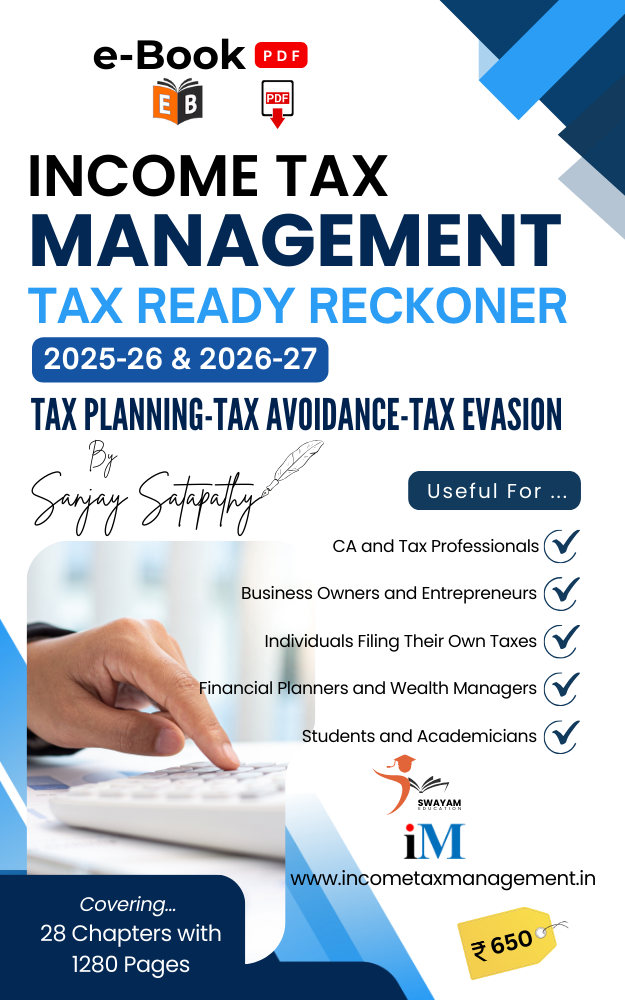INTRODUCTION:
Form 15CA and Form 15CB are essential documents under the Income Tax Act, 1961, for foreign remittances. These forms ensure that the remittance complies with tax laws and that applicable taxes (if any) are deducted before the payment is made to a non-resident. Below is a detailed explanation of both forms:
When dealing with financial transactions involving Non-Resident entities, it`s essential to have a deep understanding of the regulatory frameworks and compliance procedures. Sending money abroad requires strict adherence to the rules outlined in the Income Tax Act, 1961. Form 15CA and Form 15CB are critical tools in ensuring tax compliance and transparency in cross-border transactions.
Section 195 of the Income Tax Act, 1961 mandates the deduction of Income-tax from payments made to Non-Residents. Form 15CA and Form 15CB serve as vital components in this process, facilitating the verification and tracking of transactions. Form 15CA, a declaration of remitter submitted online, acts as a mechanism for collecting information on taxable payments to Non-Residents. It enables the Income Tax Department to monitor foreign remittances and ensure tax accountability.
Form 15CB, on the other hand, is a Tax Determination Certificate wherein a Chartered Accountant validates the details of the payment, TDS deduction, and compliance with tax provisions. This form plays a crucial role in assessing the tax liability under the Income Tax Act and Double Tax Avoidance Agreements (DTAA).
The applicability of Form 15CA and Form 15CB is contingent upon various factors such as the nature and quantum of remittances. Part A of Form 15CA is required for taxable remittances exceeding five lakh rupees, while Part B and Part C entail specific conditions based on remittance amounts and certifications from tax authorities or Chartered Accountants.
It`s noteworthy that certain types of foreign remittances are exempt from the requirement of filing Form 15CA and Form 15CB. However, meticulous adherence to filing guidelines and documentation remains paramount to ensure compliance with regulatory mandates.
Form 15CA: Declaration by the Remitter
Purpose:
- Form 15CA is a declaration formfiled by the person (remitter) making a payment to a non-resident.
- It provides details of the remittance and ensures that the payment is in compliance with tax laws.
When is Form 15CA Required?
- Form 15CA is required for all foreign remittancesexceeding ₹5 lakh (or any other threshold specified by the RBI) unless the payment is exempt from tax or covered under a specific exemption.
Parts of Form 15CA:
- Part A: To be filled for remittances that do not require a certificate from a Chartered Accountant (CA) in Form 15CB.
- Part B: To be filled for remittances that require a certificate from a CA in Form 15CB.
- Part C: To be filled for remittances less than ₹5 lakh or those covered under Rule 37BB of the Income Tax Rules.
Information Required in Form 15CA:
- Details of the remitter (name, PAN, address, etc.).
- Details of the non-resident payee (name, address, country, etc.).
- Nature and purpose of the remittance.
- Amount of remittance.
- Tax deducted (if applicable).
Filing Process:
- Form 15CA is filed onlineon the Income Tax Department’s portal.
- After filing, a signed copy of the form must be submitted to the bank or authorized dealer facilitating the remittance.
Form 15CB: Certificate by a Chartered Accountant
Purpose:
- Form 15CB is a certificateissued by a Chartered Accountant (CA) certifying that the remittance complies with tax laws and that applicable taxes have been deducted (if required).
When is Form 15CB Required?
- Form 15CB is required for remittances that are taxableor where the taxability is uncertain.
- It is mandatory for remittances exceeding ₹5 lakh (unless exempt).
Information Required in Form 15CB:
- Details of the remitter and payee.
- Nature and purpose of the remittance.
- Applicable tax rate and tax deducted (if any).
- Confirmation that the remittance complies with the provisions of the Income Tax Act and Double Taxation Avoidance Agreements (DTAAs).
Filing Process:
- The CA prepares Form 15CB after verifying the details of the remittance.
- The form is uploaded to the Income Tax Department’s portal, and a copy is provided to the remitter for submission to the bank.
Form 15CA & 15CB
Form 15CA is a declaration required when sending money to a non-resident or foreign company. It gathers information about the payment, such as its purpose, the recipient`s country, and the amount. It has four parts:
- Part A: for remittances up to five lakh rupees during the financial year, subject to tax under the Income-tax Act, 1961.
- Part B: for remittances exceeding five lakh rupees during the financial year, subject to tax, with an order/certificate from the Assessing Officer.
- Part C: for remittances exceeding five lakh rupees during the financial year, subject to tax, with a certificate (Form No. 15CB) from an accountant.
- Part D: for remittances not subject to tax under the Income-tax Act, 1961 (excluding those not requiring RBI approval).
Form 15CB is a certificate issued by a Chartered Accountant (CA), detailing the payment`s nature, tax rate as per the Income Tax Act, 1961, and other relevant information. Its purpose is to certify the taxability of the transaction and the applicable tax rate.
Process to File Forms and add CA:
Form 15CA:
To file Form 15CA for income tax, you can log in to the Income Tax e-filing portal and verify it using an electronic verification code (EVC) or digital signature. Before filing Form 15CA, you need to add your Chartered Accountant (CA) as an authorized partner, which is a one-time process per Financial Year.
Process to add a Chartered Accountant:
- Enter your CA`s membership number, a unique identification number issued by ICAI.
- Select `Authorised Partners` and click `My Chartered Accountant` from the drop-down menu.
- Click `Add CA` and enter the CA`s membership number manually or search for it in the ICAI database.
- Confirm the details and click `Confirm` to proceed.
- Your request will be submitted, pending acceptance by the CA. Once accepted, the CA will be added as your authorized partner.
Filing Form 15CA:
- Log in to the e-filing portal using your PAN and password.
- Go to the e-File tab and select `Prepare and Submit Online Form (Other than ITR).`
- Choose Form No. 15CA, enter the assessment year and PAN of the remitter.
- Fill in the applicable details in Part A, B, C, or D and click `Submit.`
- You`ll receive a confirmation screen with a transaction ID and acknowledgment number, and you can download the form as a PDF for your records.
Form 15CB:
Before filing Form 15CB, add your CA as explained for Form 15CA.
- After adding the CA, proceed to fill Form 15CB.
- Download the Form 15CButility (.xml file) from the download page.
- Prepare the form offline using the downloaded .xml file.
- Select `e-File,` click `Upload Form,` and fill in details including PANs of the remitter and CA, Form Name (15CB), and Filing Type (Original).
- Upload the prepared .xml file and the Digital Signature File using the DSC Management Utility.
- Click `Submit` and wait for the Success page.
- You can view the form under the `Worklist` tab by selecting the `For Your Information` button once it`s successfully submitted by the CA.
Related case Laws
In the case of Murali Krishna Chakrala vs Deputy Director, the Madras High Court ruled that a chartered accountant (CA) is not obligated to verify the accuracy of documents provided by clients. The petitioner, Murali Krishna Chakra, was accused under the Anti-Money Laundering Act for issuing
Form 15CB to a client facilitating import payments. The Bureau of Enforcement investigated allegations of money laundering involving fictitious bank accounts and illegal transfers abroad. The petitioner argued that issuing Form 15CB for import payments wasn`t legally required, and other banks didn`t request it. Despite issuing Form 15CB, the petitioner claimed innocence, stating involvement in a money laundering conspiracy wasn`t plausible. The court accepted the petitioner`s argument, considering the minimal fee received and lack of evidence linking them to money laundering. As a result, the petitioner was released from prosecution and admitted as a witness.
Practical Example:
- A company in India hires a non-resident consultant and agrees to pay a fee of ₹10 lakh. The payment is taxable in India.
- The company approaches a CA to prepare Form 15CB, certifying that the payment is taxable and that TDS has been deducted at the applicable rate.
- Based on Form 15CB, the company files Form 15CA online and submits both forms to the bank.
- The bank processes the remittance after verifying the forms.
| Points to Remember:
1. Exemptions from Form 15CA and Form 15CB: o No need to file Form 15CA or Form 15CB if the remittance is:
2. Sequence of Filing: o Form 15CB is prepared first (if required). o Form 15CA is then filed based on the details in Form 15CB. 3. Penalties for Non-Compliance: o Failure to file Form 15CA or Form 15CB may result in penalties or delays in processing the remittance. 4. Role of the Bank: o The bank or authorized dealer will verify Form 15CA and Form 15CB before processing the remittance. |
Conclusion:
In an era characterized by globalized financial transactions, Form 15CA and Form 15CB serve as indispensable tools for regulating cross-border remittances. These forms not only facilitate tax deduction but also enhance transparency and accountability in financial dealings with Non-Residents. As financial institutions and individuals navigate the complexities of international transactions, a comprehensive understanding of Form 15CA and Form 15CB is essential to ensure seamless compliance with regulatory obligations and foster trust in cross-border financial practices.












